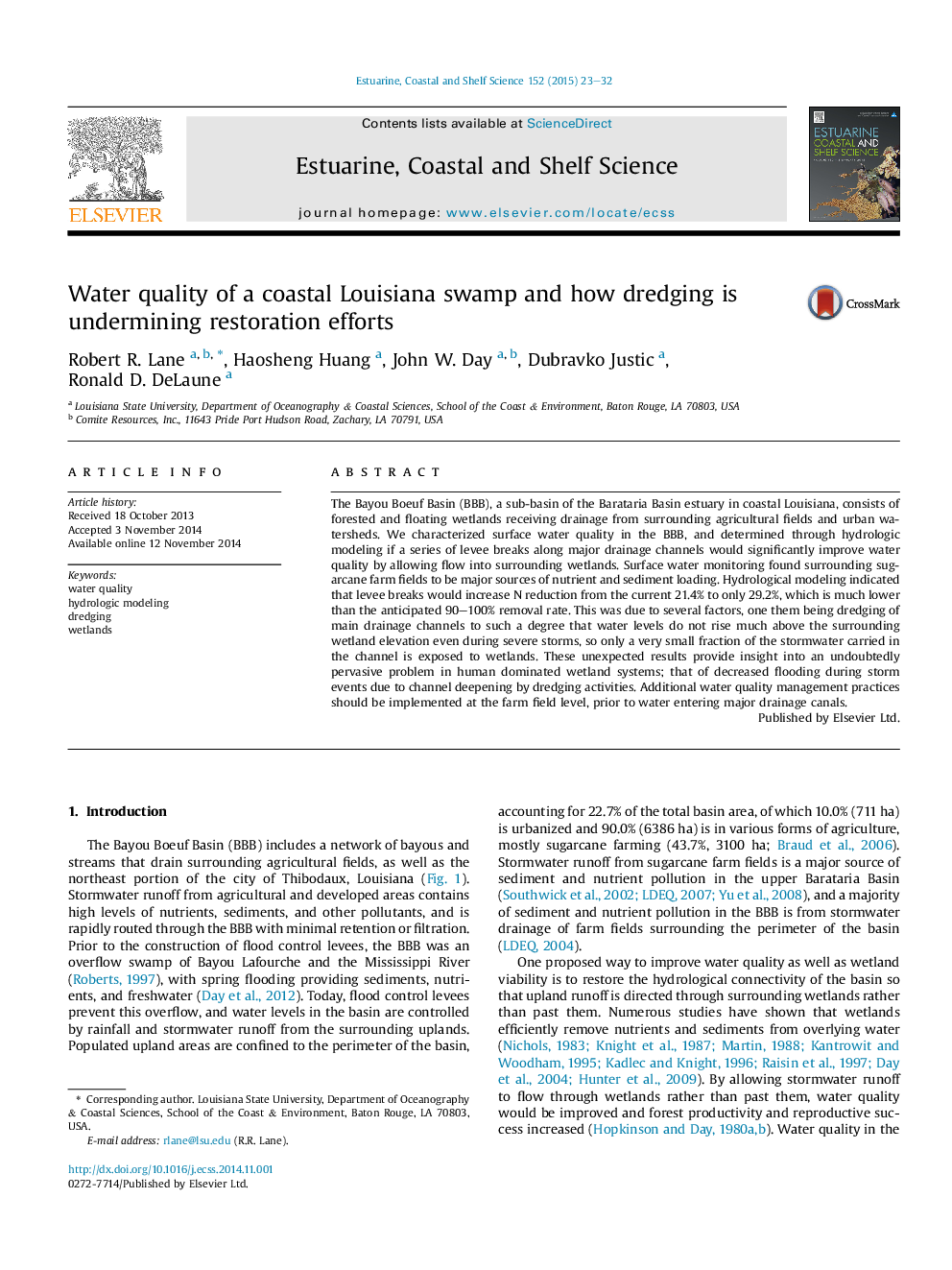| کد مقاله | کد نشریه | سال انتشار | مقاله انگلیسی | نسخه تمام متن |
|---|---|---|---|---|
| 4539543 | 1626644 | 2015 | 10 صفحه PDF | دانلود رایگان |
The Bayou Boeuf Basin (BBB), a sub-basin of the Barataria Basin estuary in coastal Louisiana, consists of forested and floating wetlands receiving drainage from surrounding agricultural fields and urban watersheds. We characterized surface water quality in the BBB, and determined through hydrologic modeling if a series of levee breaks along major drainage channels would significantly improve water quality by allowing flow into surrounding wetlands. Surface water monitoring found surrounding sugarcane farm fields to be major sources of nutrient and sediment loading. Hydrological modeling indicated that levee breaks would increase N reduction from the current 21.4% to only 29.2%, which is much lower than the anticipated 90–100% removal rate. This was due to several factors, one them being dredging of main drainage channels to such a degree that water levels do not rise much above the surrounding wetland elevation even during severe storms, so only a very small fraction of the stormwater carried in the channel is exposed to wetlands. These unexpected results provide insight into an undoubtedly pervasive problem in human dominated wetland systems; that of decreased flooding during storm events due to channel deepening by dredging activities. Additional water quality management practices should be implemented at the farm field level, prior to water entering major drainage canals.
Journal: Estuarine, Coastal and Shelf Science - Volume 152, 5 January 2015, Pages 23–32
